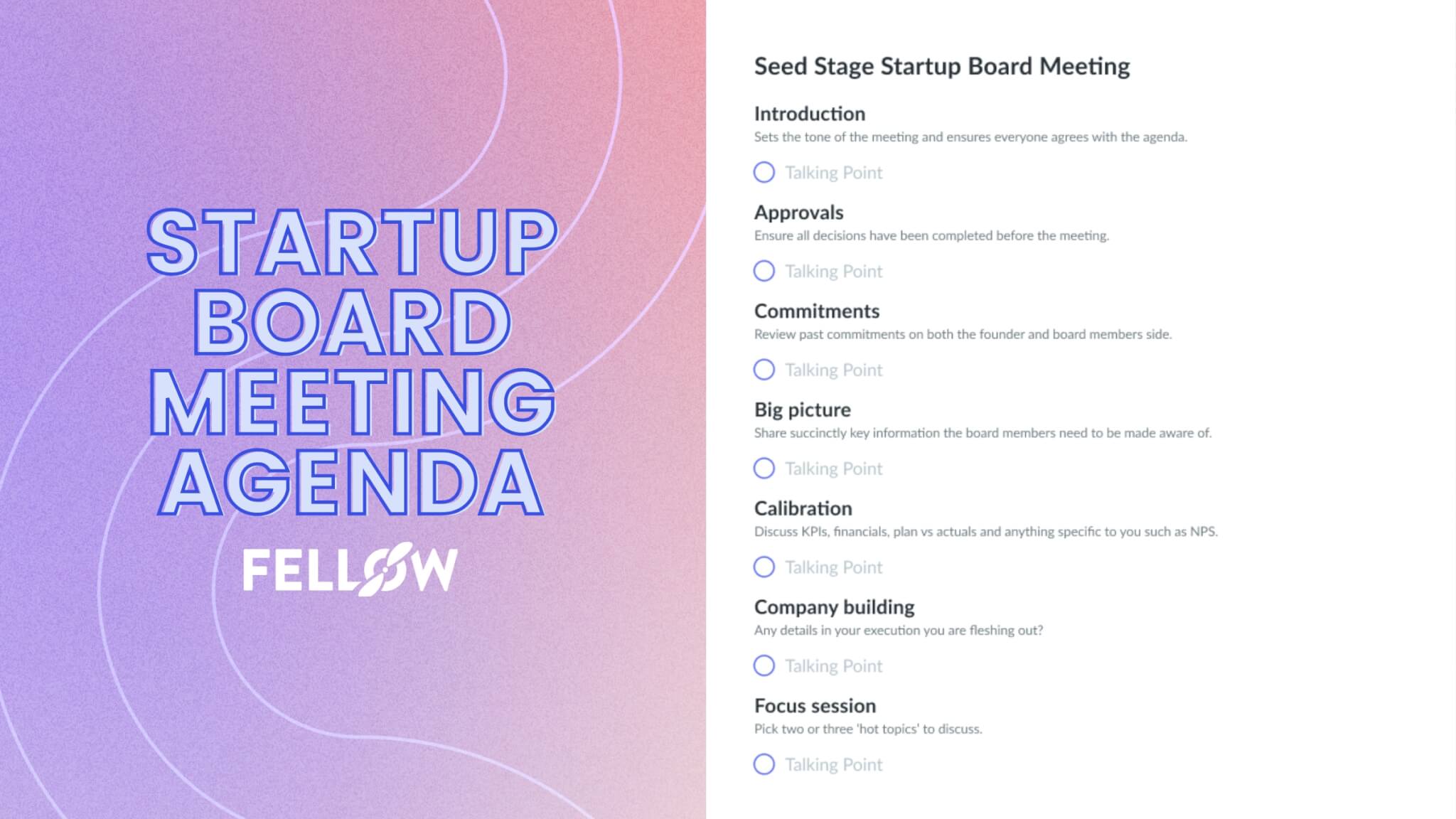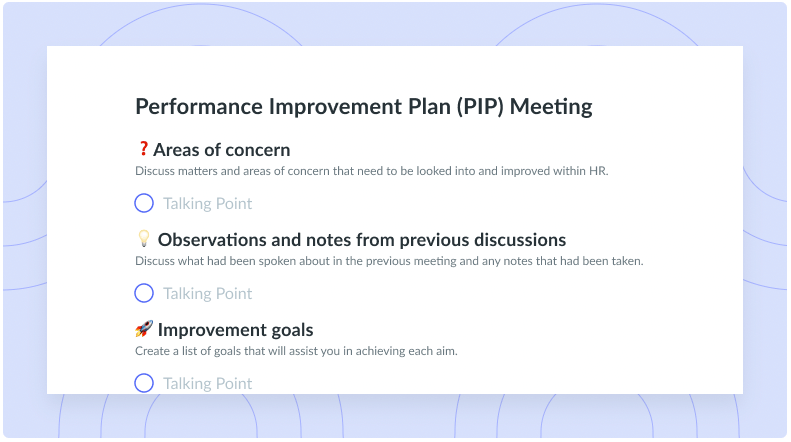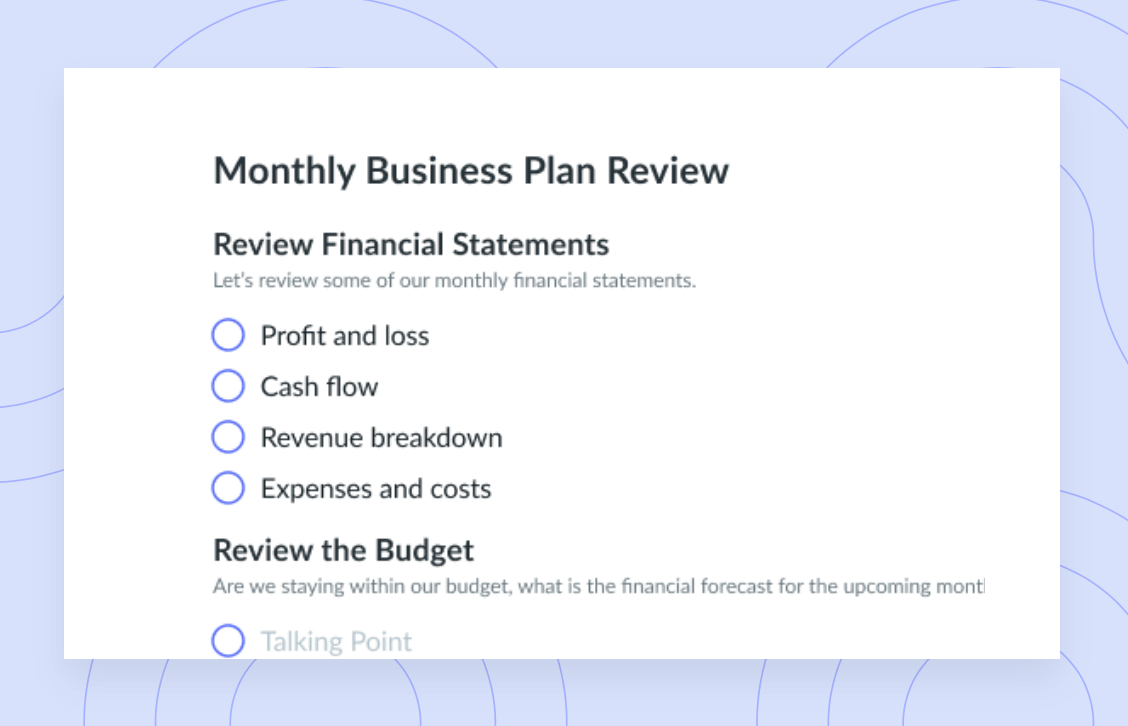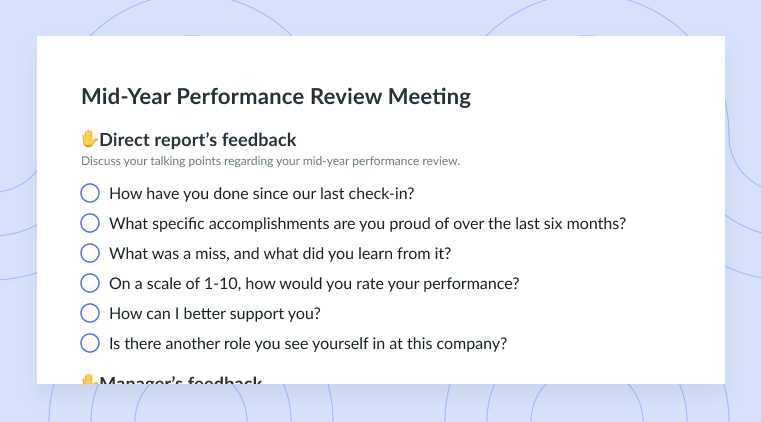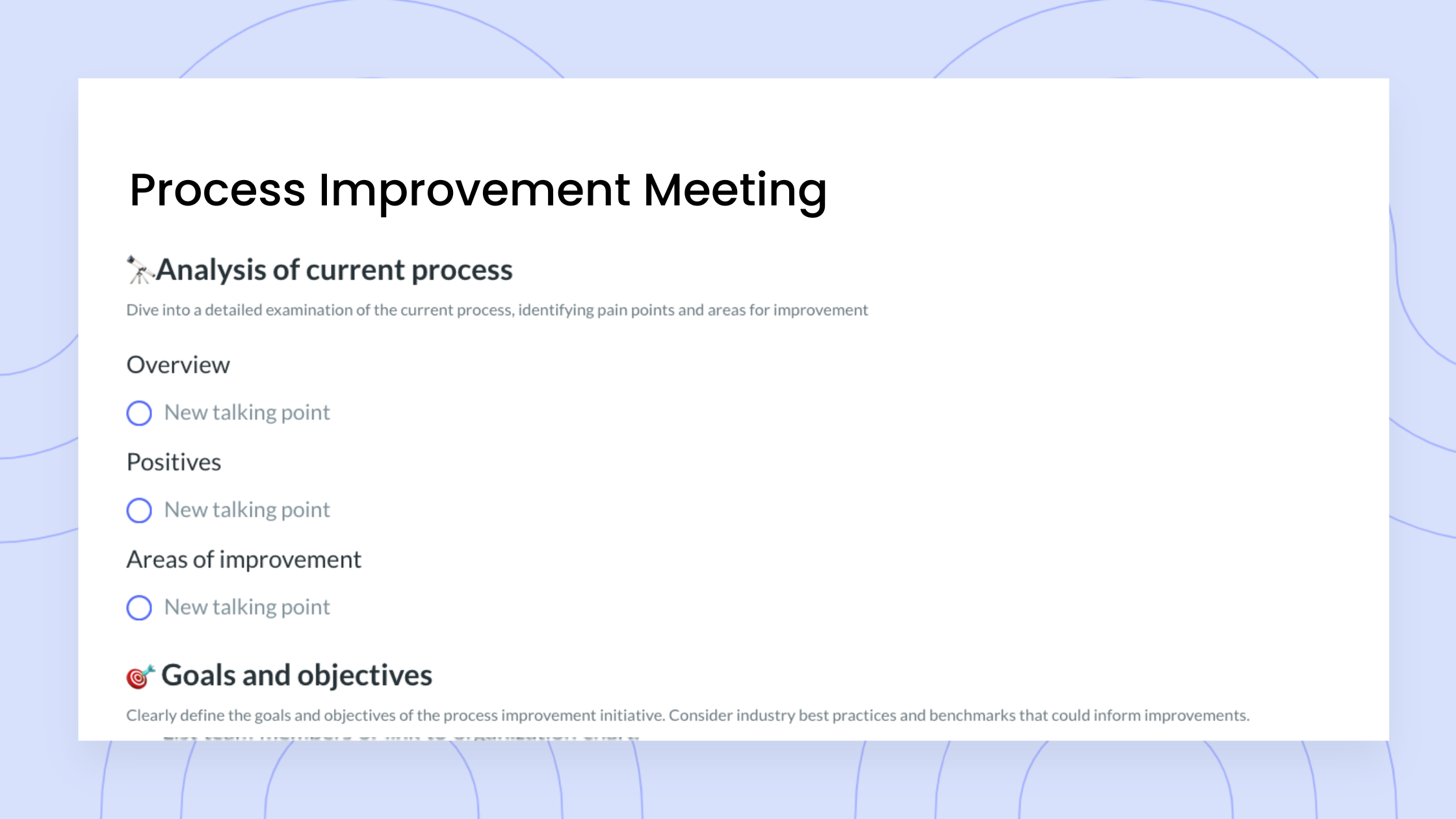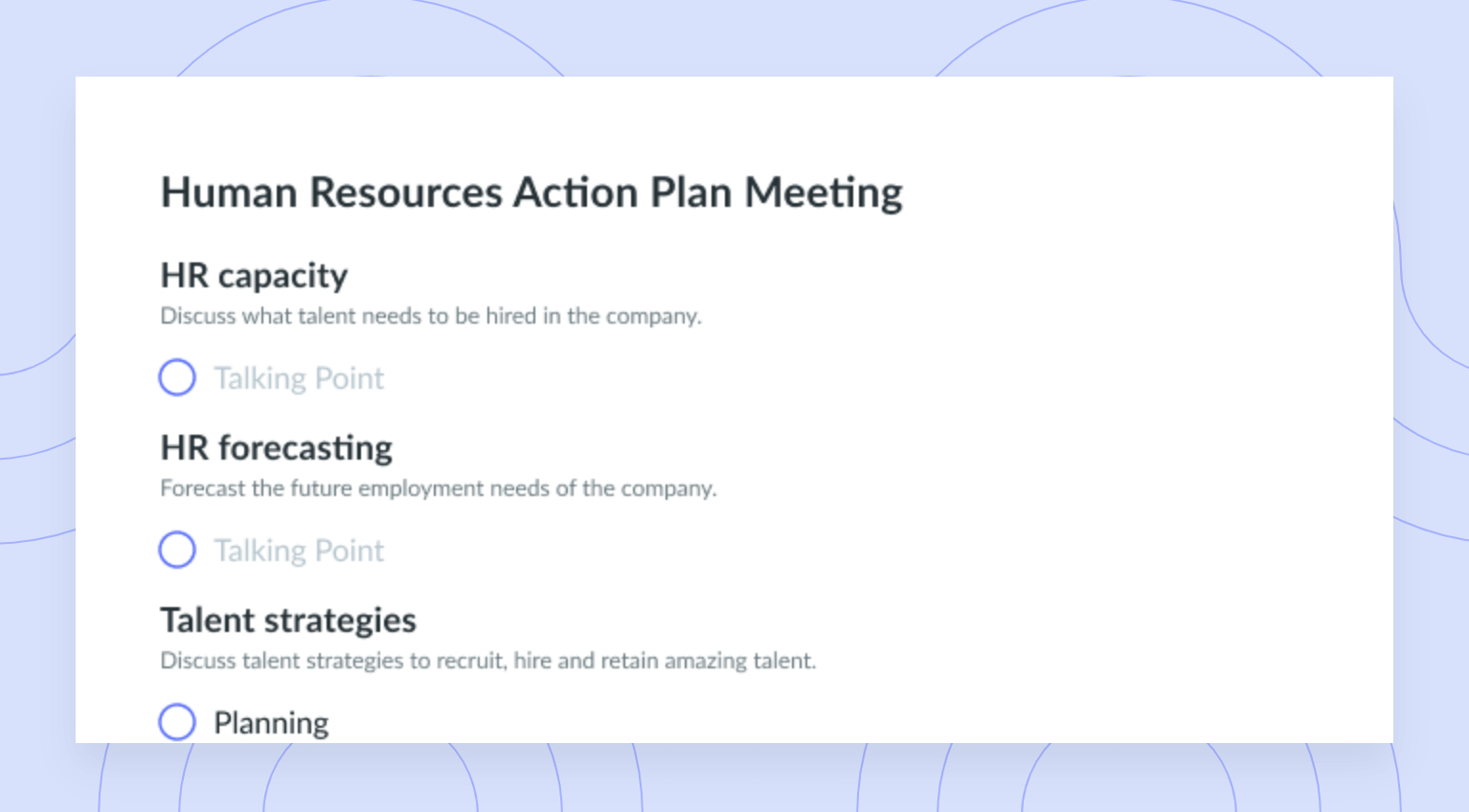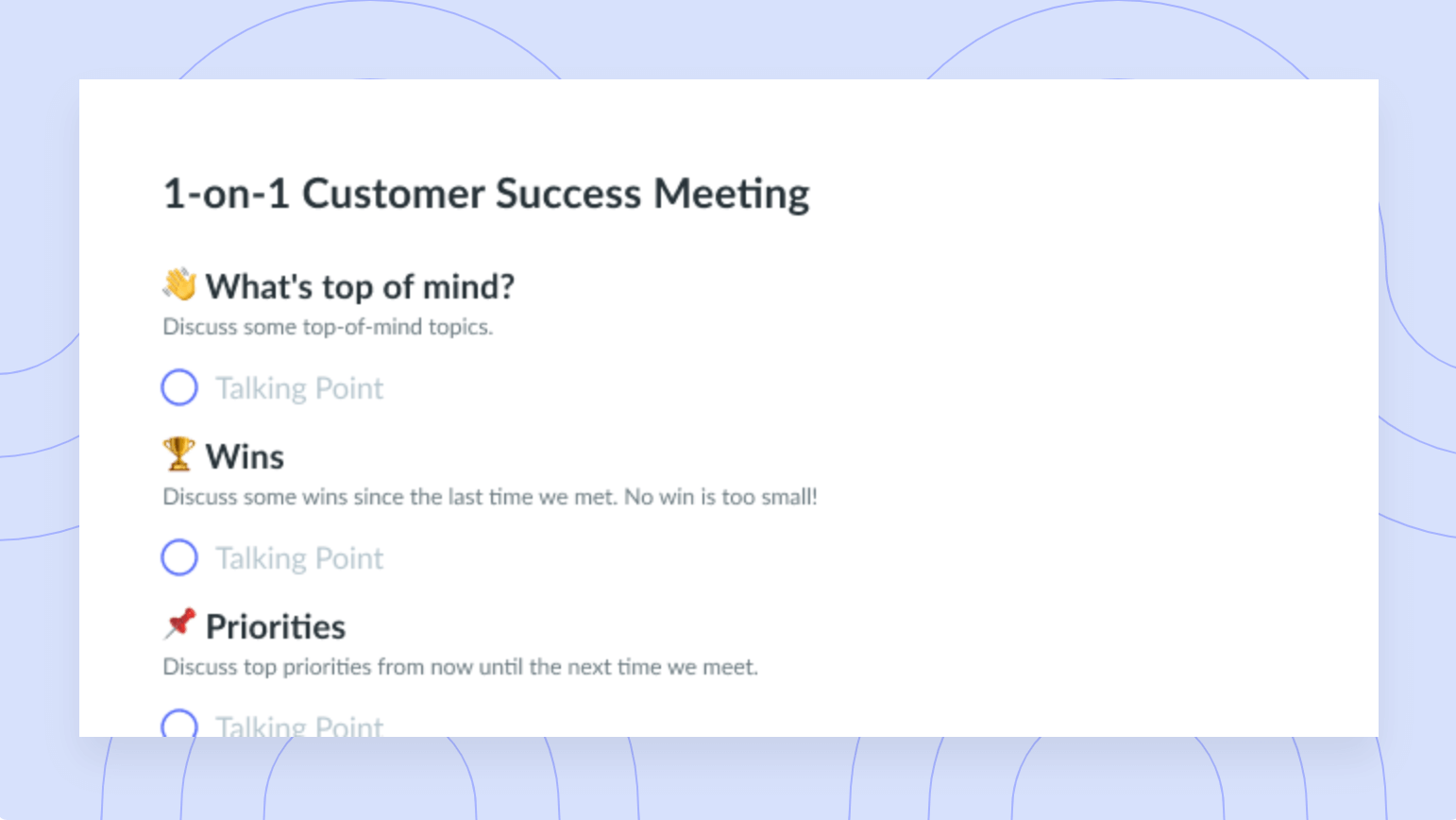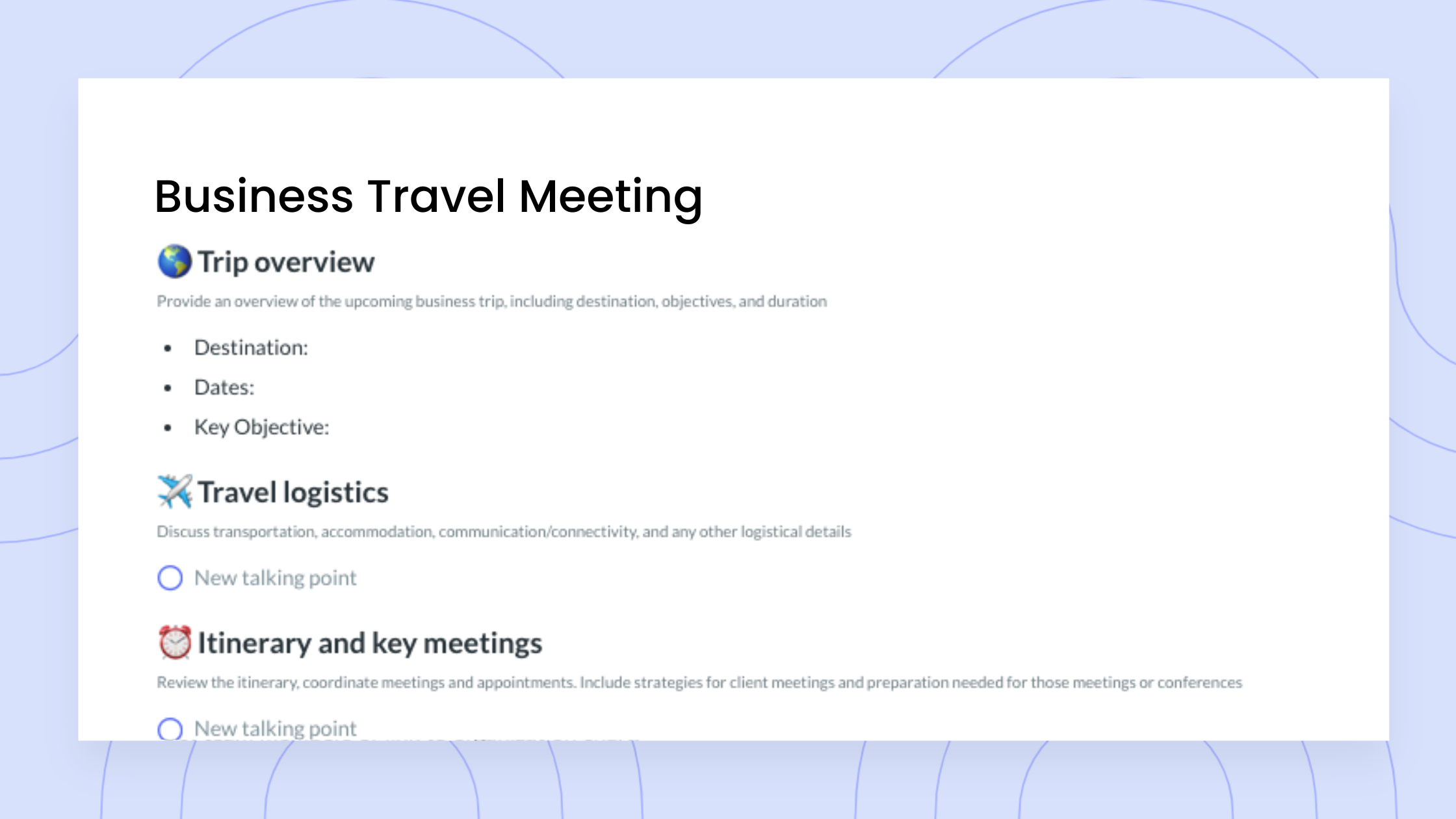Effective Performance Improvement Plan [+ Free Template]
Boost morale and improve employee performance with a comprehensive performance improvement plan. Plus, get a free template!
Effective implementation of a performance improvement plan requires clear communication, coaching and support, and effective handling of resistance and difficult conversations. In this article, we’ll teach you about the undeniable benefits of implementing a performance management plan in addition to a comprehensive framework that you can follow to create a thorough performance improvement plan of your own.
- What is a performance improvement plan (PIP)?
- Benefits of a performance improvement plan
- When to implement a performance improvement plan
- How to create a performance improvement plan
- Example of a performance improvement plan
- Free performance improvement plan meeting template
What is a performance improvement plan (PIP)?
A performance improvement plan (PIP) is a framework used by employers to gauge employee success. Often used to help employees improve performance, performance improvement plans come into play when an employee may not be performing to the best of their ability. A comprehensive PIP will detail what is expected of the employee, what they must improve on, and how they can improve with step-by-step guidelines.
The purpose of leveraging a performance improvement plan is to provide specific feedback so the employee in question knows exactly what went wrong and how to improve. Following the PIP framework will ensure there is little to no room for error, so the employee in question has the knowledge and resources they need to turn their performance around. If the employee doesn’t meet the expectations outlined in the PIP, it may result in disciplinary action or termination.

Run efficient meetings, come to a decision, and get back to work
Level up your meeting habits to boost engagement and productivity with a collaborative meeting agenda. Try a tool like Fellow!

Benefits of a performance improvement plan
1Saves time
Creating a comprehensive performance improvement plan may seem like a daunting task; however, it will save both you and the recipient tons of time in the long run. It will save you time as you won’t have to hover over your employee or provide constant feedback while they get back on track. Instead, you’ll be able to provide them with a performance improvement plan that specifies everything they need to succeed moving forward. The recipient will also be able to save time and work more efficiently as they won’t have to spend time wondering or researching and instead doing.
2Improves company culture
A positive company culture can have a significant impact on employee morale, productivity, and overall success. There is often an underlying cause for poor performance, which means there may be a deep-rooted issue within the company culture that must be addressed. When employees aren’t performing well they are often burned out, overworked, overwhelmed, or uninspired. Providing them with a PIP will help address the underlying cause of these feelings so you can collectively move towards creating a healthier workplace. When employees find fulfillment in their work, the chances of creating a positive company culture are much higher.
3Enhances employee productivity
It can be difficult to improve your workplace performance if you don’t know where to start or don’t know what you’re doing wrong, which is why performance improvement plans are so important. An employee may be struggling with productivity for any number of reasons—including poor time management, lack of clear goals or direction, inadequate resources, poor management, low morale or engagement, and so much more. It’s important to note that this responsibility doesn’t lie only on the employee but also on the employer.
If you’ve noticed that one of your employees is struggling with their productivity as a result of one or more of these reasons, it may be time to implement a performance improvement plan. Not only will the PIP provide them with a structured plan that they can follow to get back on track, but it will also identify exactly where they went wrong so they know what to avoid in the future. The PIP will also help you as their manager identify where you may have gone wrong and how you can better support the employee in question in the future.
When to implement a performance improvement plan
A PIP is used in a variety of scenarios, including performance improvement plans as part of the company policy, changes in job responsibilities, specified issues or incidents, or consistently poor performance. In essence, unless otherwise specified, a performance improvement plan is usually used only when necessary, which is usually when an employee’s performance is not meeting the expected standards set upon them by their superiors or if their performance has been identified as needing improvement.
How to create a performance improvement plan
- Create SMART goals
- Develop a draft plan
- Review the draft plan
- Implement the plan
- Evaluate the plan’s progress
1Create SMART goals
Setting SMART goals is a must when creating a performance improvement plan. To stay on top of your employee’s goals, you can leverage Fellow’s Objectives feature to record, define, and track the progress of your agreed-upon objectives and key results (OKRs). With the Objectives tab in Fellow, you can link your objectives with a meeting—making it easy to review progress, resolve challenges, and keep all OKRs on track.

2Develop a draft plan
While you may be eager to implement the plan immediately, it’s important that you take your time. You’ll want to create a draft and review it with your colleagues or the employee in question to make sure your performance improvement plan encompasses everything the employee may need to succeed moving forward.
3Review the draft plan
After you’ve created the performance improvement plan, it’s time to review your work. Your PIP must encompass all crucial details, including specific goals and objectives, a timeline, steps that detail how to achieve the specified goals and objectives, metrics for measuring progress, consequences for failing to meet goals and objectives, and any supporting materials or resources that are necessary.
4Implement the plan
Now that you’ve created and reviewed the performance improvement plan, it’s time to put it into action. It’s important to review the plan with the employee in question so you can address any questions and provide clarification before they get started. Answering any questions they have upfront will ensure they’re equipped with the knowledge necessary to see the plan through to fruition.
5Evaluate the plan’s progress
Implementing a performance improvement plan is one thing, but tracking success is another. If you’ve implemented a PIP, it’s because improvement was necessary. As a result, it’s incredibly important to follow up and gauge success throughout various benchmarks during the plan. Doing so will ensure the employee in question is on track and improving rather than struggling and failing to meet goals and objectives.
Example of a performance improvement plan
Example of a performance improvement plan for an employee in the marketing department who is struggling with meeting performance expectations.
Employee: Sarah McNeil
Department: Marketing
Current Position: Content Manager
Supervisor: Brenda Curran
Date: 2023/04/02
Overview:
Sarah’s performance as a Content Manager has fallen short of the expectations specified in her job description. This performance improvement plan is designed with the necessary guidance, support, and resources to help Sarah meet the expectations of her role.
Performance issue:
The following areas of performance have been identified as needing improvement:
- Incomplete projects and missed deadlines.
- Failure to meet monthly content quote for the company website.
- Inability to maintain consistent communication with the marketing team.
Goals and objective:
The following goals and objectives have been set for Sarah to improve her performance:
- Achieve 100% of the content quota for the next three months.
- Reply to all team messages and inquiries within 24 hours of receipt.
- Adhere to project requirements and deadlines outlined by the team for the next three months.
Timeline:
The PIP will be in effect for three months beginning on 2023/04/06. Progress will be reviewed at the end of each week with a formal review scheduled at the end of each month.
Steps to achieve goals:
To achieve the goals outlined above, Sarah must take the following steps:
- Attend weekly coaching sessions with her manager to discuss progress and identify areas that need improvement.
- Attend weekly coaching sessions with her manager to receive regular feedback.
- Implement a content management tool to improve efficiency and track progress.
- Review and revise daily goals and objectives to remain accountable to a new workflow.
- Attend a content management course to refine her skills and remain accountable for success.
Metrics for measuring progress:
The following metrics will be used to measure Sarah’s progress toward her goals:
- Monthly content quota achieved.
- Project goals, objectives, and timelines met.
- Feedback from peers and managers regarding timely response rate.
Consequences for not meeting goals:
If Sarah does not meet the goals set in the agreed-upon performance improvement plan, the following consequences will be imposed:
- Continued coaching and monitoring of performance.
- Additional disciplinary action including termination of employment.
Support and resources:
To help Sarah achieve her goals, the following support and resources will be provided:
- Access to marketing training courses.
- Weekly coaching sessions with her manager.
- Regular feedback and guidance on performance.
- Implementation and training on content management tools.
Signatures:
By signing below, we acknowledge that we have reviewed and agreed to the terms of the performance improvement plan:
Sarah McNeil: ____________________Date: _________
Brenda Curran (Supervisor): __________Date: _________
Free performance improvement plan meeting template
Need inspiration for hosting an impactful meeting that helps get your employee back on track? Check out this free performance improvement plan meeting template!
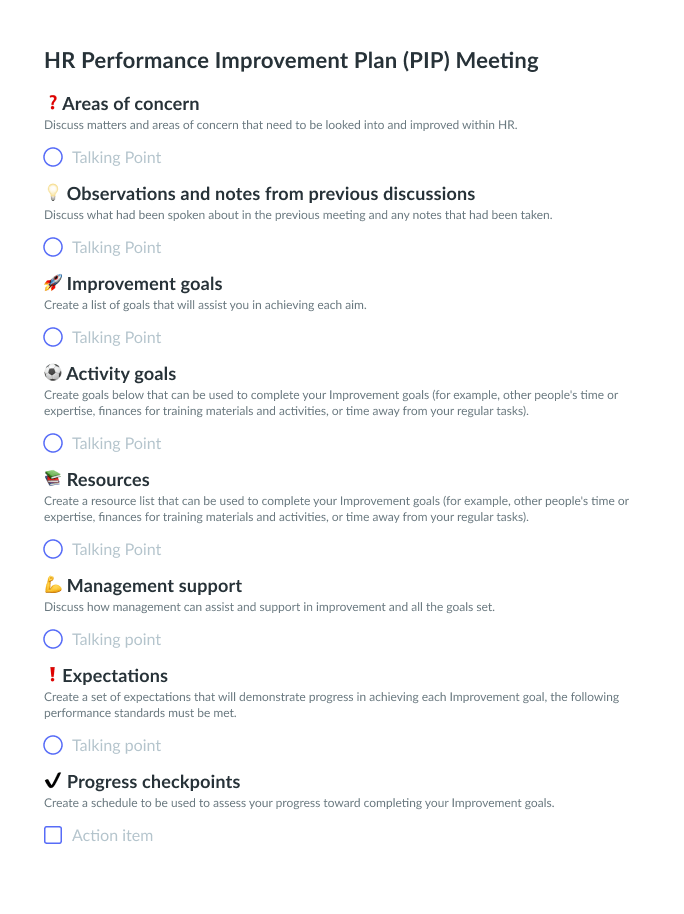
Improve performance with a comprehensive performance improvement plan
If you’ve been struggling with an employee who isn’t performing to the best of their ability, a performance improvement plan is a valuable tool that will help enhance their performance. Remember, setting performance goals and objectives, providing feedback, creating a development plan, and monitoring performance are key components of a performance improvement plan that shouldn’t be ignored when crafting your plan.
![10 Effective Strategies to Improve Employee Performance [+ Free Template]](https://fellow.app/wp-content/uploads/2020/07/Improving-employees-performance.png)






